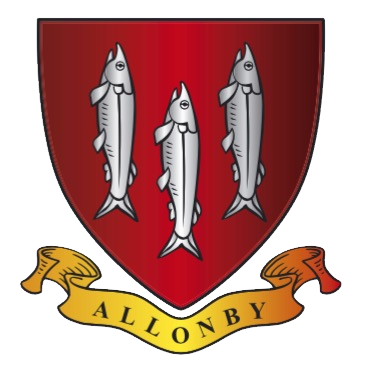About Allonby Parish Council
Allonby is an attractive village situated on the Solway coast between Maryport and Silloth. It is famed for its spectacular sunsets over the Solway Firth and Scottish hills, whilst inland can be seen the Lake District fells. The area around Allonby has been designated an Area of Outstanding Natural Beauty, and the sandy beach has won several Seaside Awards.
The current population is around 440, which increases to around 2000 in the summer months when the caravan sites are open.
Facilities are reasonable for the size of the village. There is a Church, a primary school, two hotels, several shops and food outlets, and a leisure complex attached to one of the caravan sites. A hall us available for public use. A mobile butcher visits on a weekly basis, and a mobile post office visits every Thursday morning. A bus service connects Allonby with Maryport and Silloth, but there is no evening or Sunday service.
There are few employment opportunities in Allonby. Many of the resident population are of retirement age, and of the remainder most commute to one of the larger towns in the area.
Despite its small size, Allonby has several other impressive buildings. The Reading Room was erected around 1862, funded partly by local donations and partly by Joseph Pease, a Quaker industrialist. It was designed by Alfred Waterhouse who went on to become the architect for Manchester Town Hall and London Natural History Museum. Derelict for many years, it is now being restored as a private residence.
North Lodge was built around 1840 by Thomas Richardson of Darlington. The central section served as a summer residence, and at each side were three smaller cottages which were occupied rent-free by local widows or spinsters.
Two of Allonby most famous visitors were Charles Dickens and Wilkie Collins who stayed at the Ship Hotel in 1857. Their visit is documented in Dickens Lazy Tour of Two Idle Apprentices.
Allonby’s most famous son is Captain Joseph Huddart (1741-1816), mariner, hydrographer, chartmaker and inventor. A large memorial to his memory is situated in Christ Church, Allonby.
It would seem fitting to include some lines by Joseph J Heskett (1865-1951) Â Allonby’s Shoemaker Poet. During his long and interesting life he wrote over 500 poems, and though he emigrated to Vancouver in 1911 he never forgot his Allonby roots.
From Allonby on a Summer Morning:
The surf-swept shingle beach with gentle rise Stretches along as far as eyes can scan.
The pretty white-washed village snugly lies, The fairest spot to me or any man.

